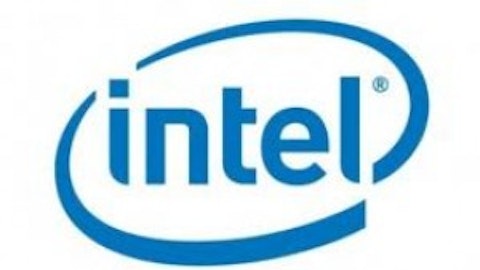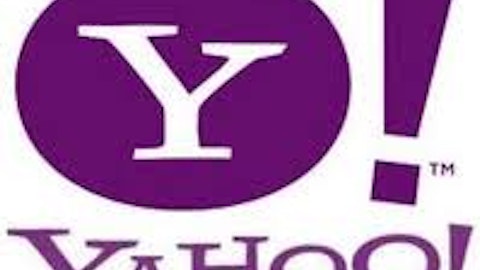
The high school student took top prize – the $75,000 Gordon E. Moore Award – last Friday at the Intel International Science and Engineering Fair in Phoenix. He received the scholarship award for using artificial intelligence to create a low-cost, self-driving vehicle.
It’s well known that Google Inc (NASDAQ:GOOG) is considered the leader in developing a fully autonomous vehicle, as its project’s progress is well publicized. And Musk told Bloomberg earlier this month that he is talking to Google Inc (NASDAQ:GOOG) about its driverless systems. (Musk said he prefers the term “autopilot,” as it gives the message that the human is in control.) So, there’s little doubt that offering “autopilots” for Tesla Motors Inc (NASDAQ:TSLA)’s is on Musk’s short-term radar (no pun intended).
Ionut Budisteanu’s self-driving technology
Budisteanu’s technology involves the coupling of low-resolution 3-D radar with webcam imagery, per an NBC News article. The low-res radar identifies larger objects, such as other cars, buildings, trees, etc. The webcam imagery is processed using artificial intelligence to recognize such things as curbs, lane markings, and small objects on the road.
The information from the two systems is collected, processed, and fed into a main computer, which “drives” the car.
How did this system perform? Per NBC,
“Budisteanu ran 50 simulations with his system and in 47 of them it performed flawlessly. In three, however, it failed to recognize some people who were 65 to 100 feet (20 to 30 meters) away. He said slightly higher-resolution 3-D radar should do the trick and still keep costs at a fraction of Google’s.”
Budisteanu said his system should cost no more than $4,000.
So, how does this system compare with Google Inc (NASDAQ:GOOG)’s? That’s our next section.
A two-route transition to fully autonomous systems?
Budisteanu and Musk have something in common – they both were quoted (a couple weeks apart) as saying Google’s self-driving technology is too costly. And it appears they have the same broad solution – that incorporating a camera system is the way to go. (I think Musk should cough up a Tesla Motors Inc (NASDAQ:TSLA) Model S for the young Romanian to use as a prototype!)
Budisteanu told NBC News:
“The most expensive thing from the Google Inc (NASDAQ:GOOG) self-driving car is the high-resolution 3-D radar, so I was thinking how I could remove it.”
And Musk told Bloomberg:
“The problem with Google’s current approach is that the sensor system is too expensive. I think Tesla Motors Inc (NASDAQ:TSLA) will most likely develop its own autopilot system for the car, as I think it should be camera-based, not Lidar-based. However, it is also possible that we do something jointly with Google Inc (NASDAQ:GOOG).”
(Lidar is a sensing technology that measures distance to something by illuminating the target with laser light and analyzing the reflected light.)
If the commonly thrown around figure of $75,000 for the Google Inc (NASDAQ:GOOG) system is even fairly close to accurate, they’re both certainly correct. I’m not sure how a $75,000 or even $50,000 system would get down to a cost within five years (Google has said its systems will be available within five years) to where a sizable number of even higher-end car owners would opt to have it installed.
That said, I still think it was smart for Google to work on its driverless system without regard to costs – at least initially. Google’s aiming for the best technology possible. Once it feels it’s achieved this goal, it can work on reducing costs to determine if a lower-cost option can match or come very, very close to its current system. After all, we’re talking about a technology where even a small error could have disastrous consequences. Google could also offer a couple different systems.
What I think will happen is that they’ll be two routes to the migration from human drivers to fully autonomous drivers: Google’s direct jump and an incremental step change.
Google’s systems – or the direct jump — could appeal to consumers who can afford pricier systems plus feel comfortable with the technology. They also could be very beneficial in certain commercial applications. In the incremental route, “autopilots” will be available to take over some — but not all — of the driving. Costs aside, this route could get systems in cars faster, as there won’t be the need for massive legislative and regulatory overhauls. A licensed human driver will be in the car, and be legally responsible for its operation.
Foolish bottom line
It’s likely Google Inc (NASDAQ:GOOG) will be the first to market with fully autonomous systems. Though it seems that lower-cost, quite advanced, semi-autonomous systems — perhaps something similar to Ionut Budisteanu’s system or Oxford University’s system (link below) — could find buyers among those who can’t afford an early fully autonomous system, as well as those who don’t feel comfortable making the switch in the early stages.
Ionut Budisteanu’s Romania, as well as much of Eastern and Central Europe, are not on economic par with the U.S. and Western Europe. Thus, there’s an even greater need for self-driving systems to be lower-cost in these regions.
Congratulations, Ionut!
The article Will Google, Tesla & Others Have a Bidding War for this 19-Year-Old? originally appeared on Fool.com and is written by BA McKenna.
Copyright © 1995 – 2013 The Motley Fool, LLC. All rights reserved. The Motley Fool has a disclosure policy.



